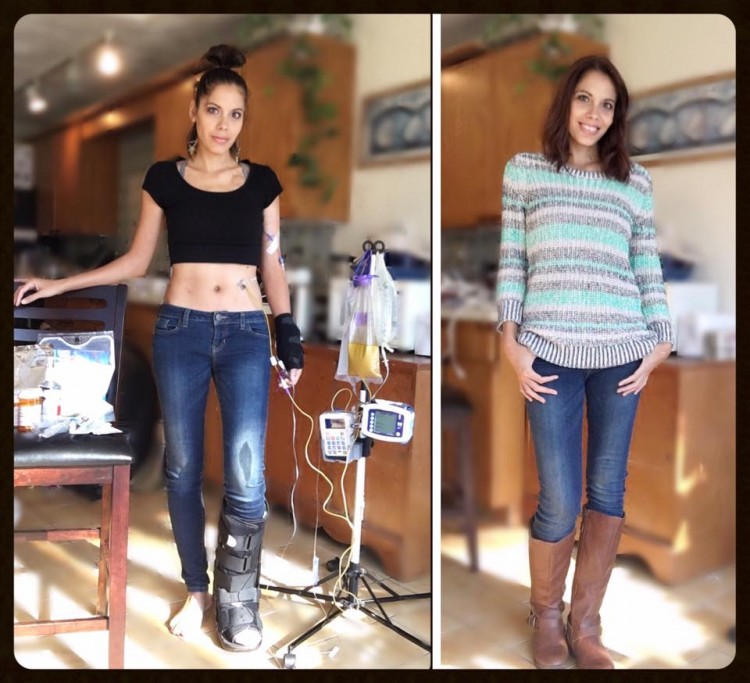25 Pictures That Show What Ehlers-Danlos Syndrome Really Looks Like
Editor's Note
Please note this story contains some graphic medical images.
What do the Ehlers-Danlos syndromes (EDS) “look like?” It’s a question that can have many answers, and a lot of it depends on which subtype of EDS you have. There are 13 subtypes of Ehlers-Danlos, though hypermobile Ehlers-Danlos syndrome (formerly called type 3) is by far the most common subtype.
• What is Ehlers-Danlos Syndrome?
• What Are Common Ehlers-Danlos Syndrome Symptoms?
The subtypes include:
- Hypermobile Ehlers-Danlos Syndrome (hEDS)
- Classic Ehlers-Danlos Syndrome (cEDS)
- Vascular Ehlers-Danlos Syndrome (vEDS)
- Classical-like EDS (clEDS)
- Cardiac-valvular EDS (aEDS)
- Arthrochalasia EDS (aEDS)
- Dermatosparaxis EDS (dEDS)
- Kyphoscoliotic EDS (kEDS)
- Brittle Cornea Syndrome (BCS)
- Spondylodysplastic EDS (spEDS)
- Musculocontractural EDS (mcEDS)
- Myopathic EDS (mEDS)
- Periodontal EDS (pEDS)
The symptoms for each subtype of EDS vary and can impact everything from your skin to your bones, organs and the connective tissues around your joints. This is largely because the condition impacts the quality and amount of connective tissue, composed of a protein called collagen, everywhere in your body. Some of the most common signs and symptoms people with EDS experience include:
- Joint hypermobility and flexibility
- Subluxations (partial dislocations) or full joint dislocations
- Stretchy, velvety, or fragile skin that’s prone to scarring
- Easy bruising and slow wound healing
- Chronic pain
- Digestive system issues
- Vision problems
Other EDS symptoms you may experience, especially if you have one of the rarer subtypes of EDS might include:
- Growth and development differences
- Limb differences, such as a club foot
- Scoliosis or kyphoscoliosis, which causes your spine to curve horizontally and vertically
- Ruptured arteries or organs
- Heart or vascular issues
- Thin or atypically shaped corneas (the clear part of your eyes)
- Weak or brittle bones
Some symptoms of the 13 types of EDS are visible: for example, hypermobility and easy bruising. Other symptoms aren’t so visible, like chronic pain, organ rupture, and co-morbities like postural orthostatic tachycardia syndrome (POTS). But whether your symptoms are visible or invisible to others, all are valid and all can be misunderstood by people who may not understand the effect these symptoms can have on your life.
We partnered with the Ehlers-Danlos Society to ask our Facebook communities to share a photo of what their EDS looks like. It’s clear that while there are many similarities in how EDS presents itself in different people, there is also great variety — and so many of an EDS-er’s health challenges are not easily seen by others. An EDS zebra’s physical symptoms may be hidden, but their courage in facing this condition is clear.
Here are the photos they shared with us:
1. “What people cannot see. What we conceal is not obvious to the rest.”
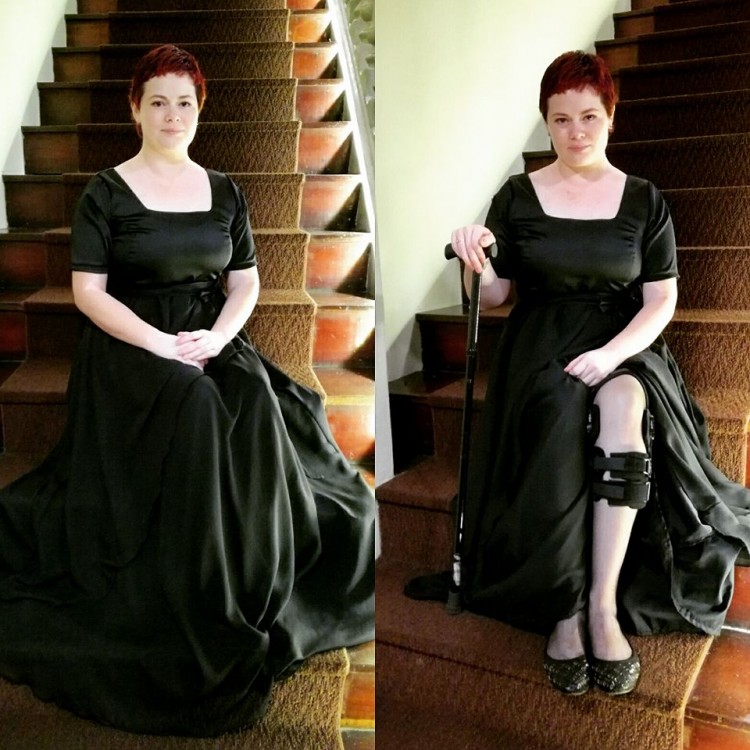
2. “With EDS you never know how you might feel in the next few hours, the next day, next week, next month… You might be able to walk, dance, and the next you are so weak and in so much pain you cannot leave the bed. People judge when we are seen walking after parking in a special parking space.”
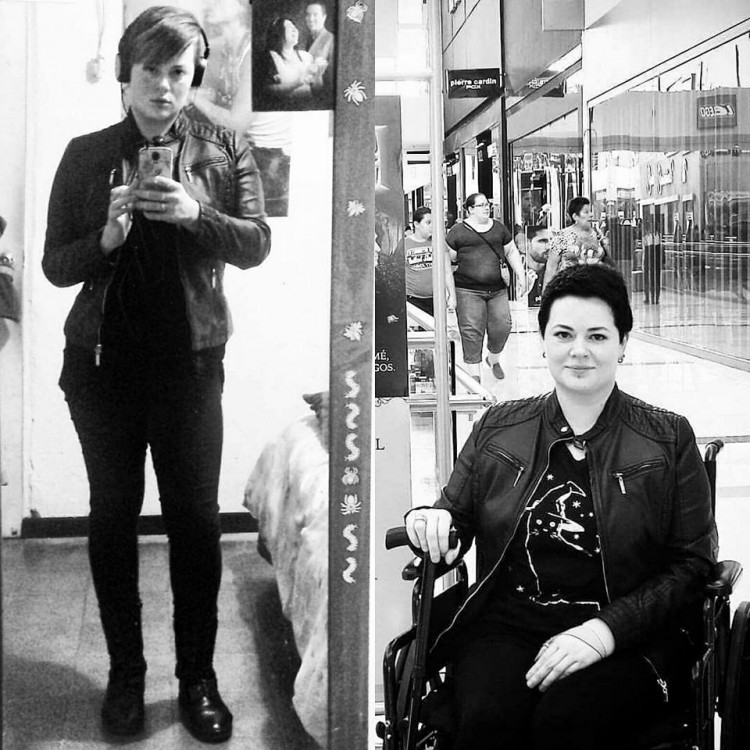
3. “My little zebra warrior type 2 and 3. Diagnosed at 7 and me at 40 last year. I have had problems since age 2 but not diagnosed until many years after having my son. I was always just that clumsy, accident prone kid.”
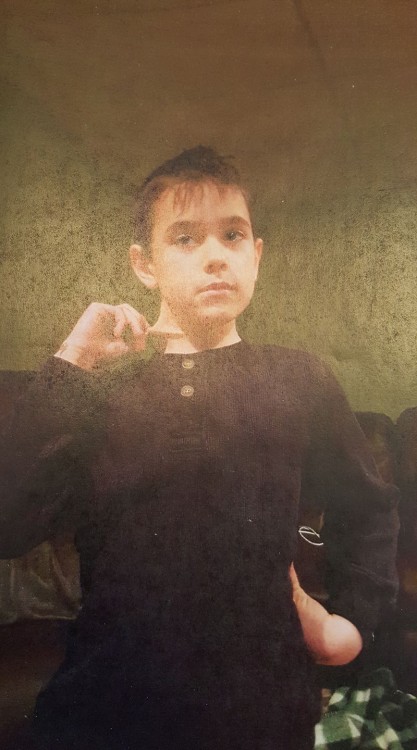
4. “Most people wouldn’t assume I’ve had multiple shoulder surgeries, including a total reconstruction, and countless spinal and nerve-related procedures to control pain. No one would guess that I am in practically intolerable pain day in and day out. EDS doesn’t necessarily look like anything on the outside. It looks like you and me!”
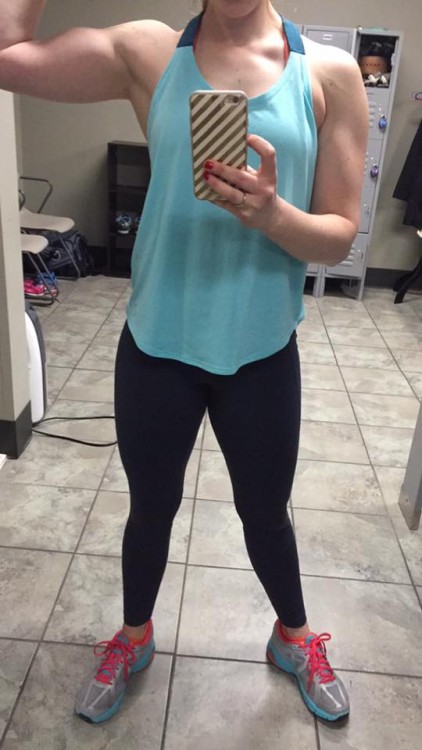
5. “One of my three sons, who all including me have EDS type 3.”
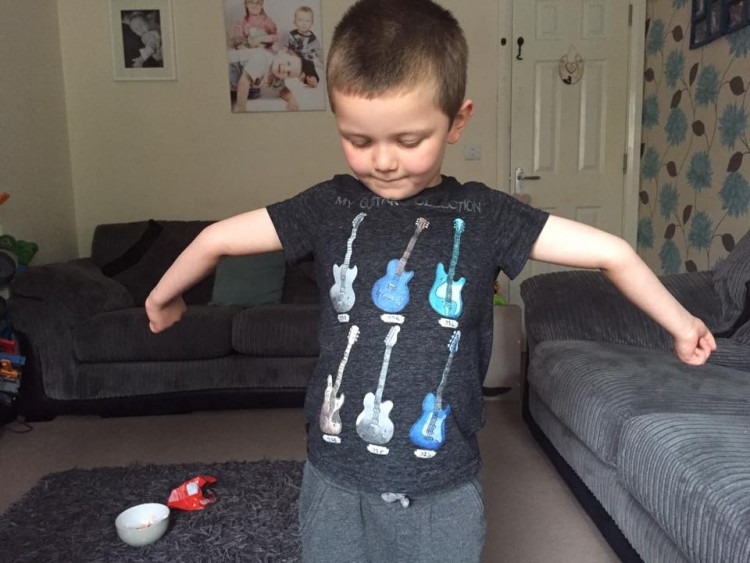
6. “I [experience] subluxations, migraine (just got over a 13-day one), chronic pain and a fair few other bits. People always say ‘you don’t look disabled.’”

7. “This is what Ehlers-Danlos syndrome looks like. A seemingly healthy person who had already experienced several dislocations by the time this picture was taken that day.”
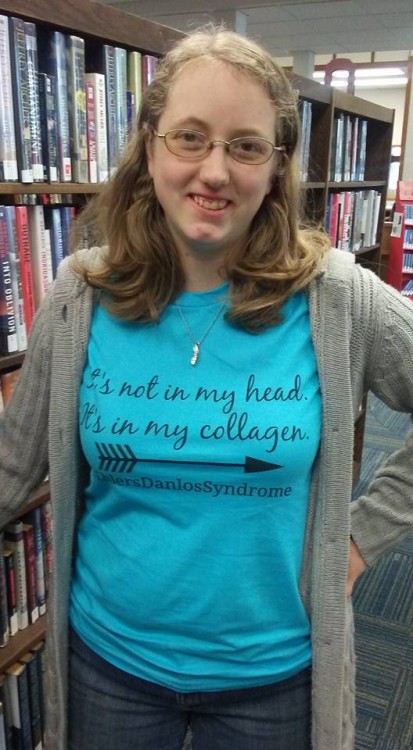
8. “In spite of all the silversplints on the left, still being able to do the thingy on the right with ease. Just shows how easily my MCPs and PIPs manage to dislocate right through the splints. They do some good but don’t keep the joints in place completely.”
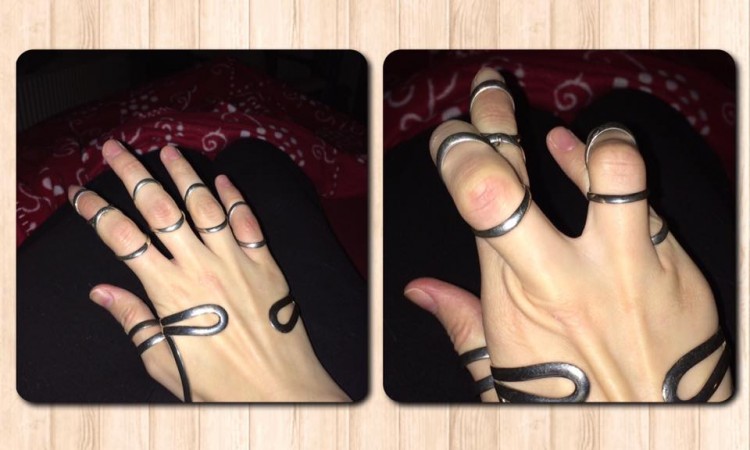
9. “Easy bruising. I leaned against furniture while rearranging my basement. Next day my legs looked like this. I get a lot of large ugly bruising with no pain or recollection of getting them.”
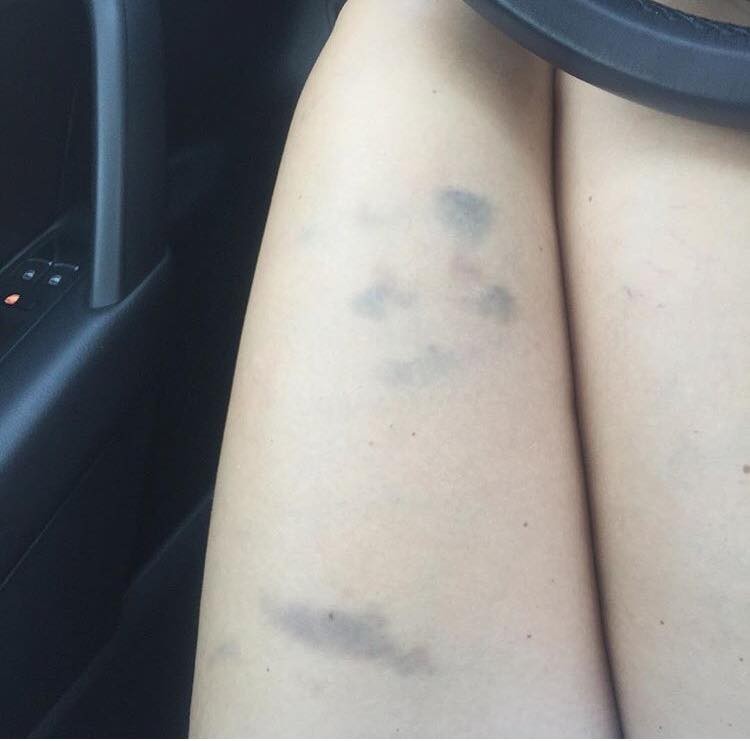
10. “For me, it means wearing my braces and wraps and tape even when I hate getting strange looks, questions, and comments. Protecting my body so I can be the best mom I can be is so important, but it’s not easy. Moments when my disease gets to be just a part of me, instead of the most obvious part of me, are the best. Here I am with my husband at my best friend’s wedding.”
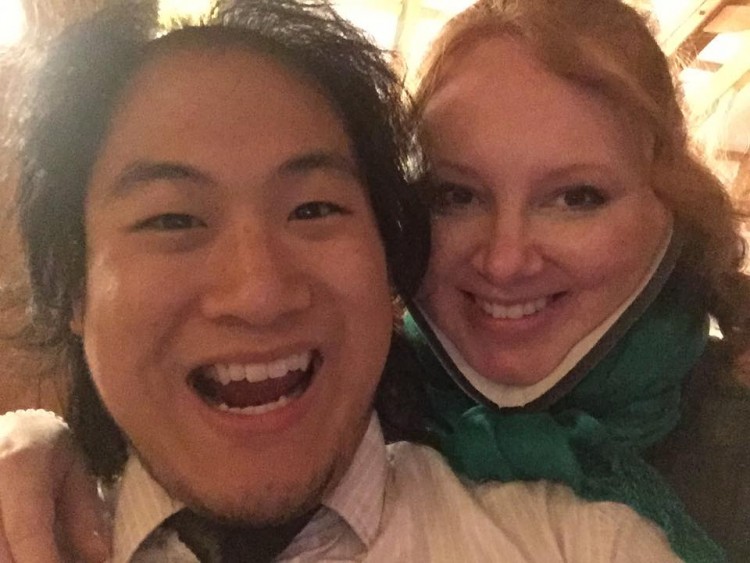
11. “The not-so-invisible bit of EDS type 3.”
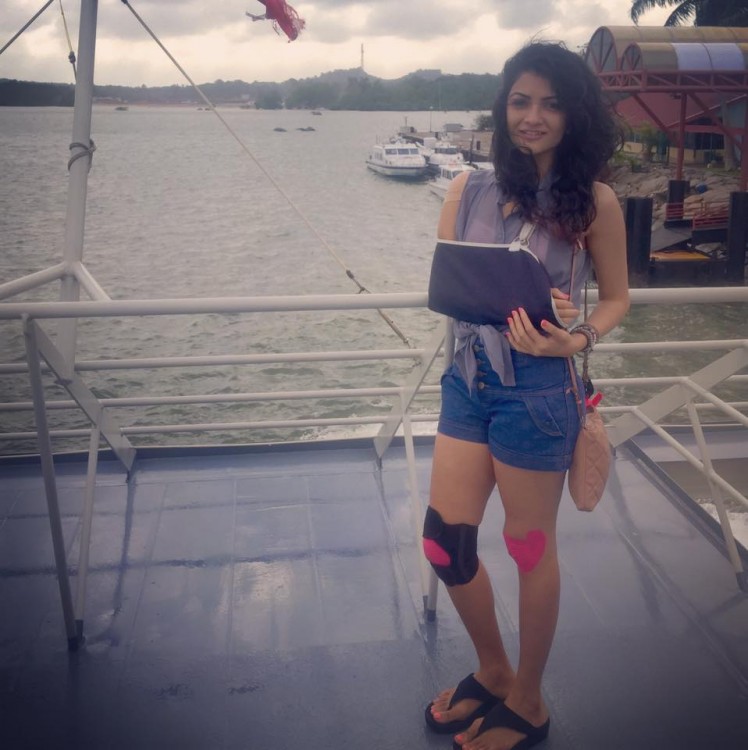
12. “People always ask how my skin is so radiant being a male. They believe I look awesome. But reality is different. Having your veins visible is not sign of beauty, it’s sign that you [might have] EDS.”

13. “EDS looks like strength, determination and willpower. It looks like the ability to get past everyday chronic pain and still live your life to the fullest. It looks like the ability to hear people tell you that you ‘can’t do that’ or ‘will never be able to become that,’ and then find a way to prove them wrong. This picture was taken less than a month before my fifth surgery to replace and repair tendons, ligaments and muscles that continuously fail in my shoulders and back. But I found a way to live my life that day.”

14. “Ehlers-Danlos syndrome vascular type because it’s not just about hypermobility. This was me after an operation to replace a dissected aorta last year. The operation saved my life but left me with permanent paraplegia. Vascular Ehlers-Danlos syndrome completely changed my life.”
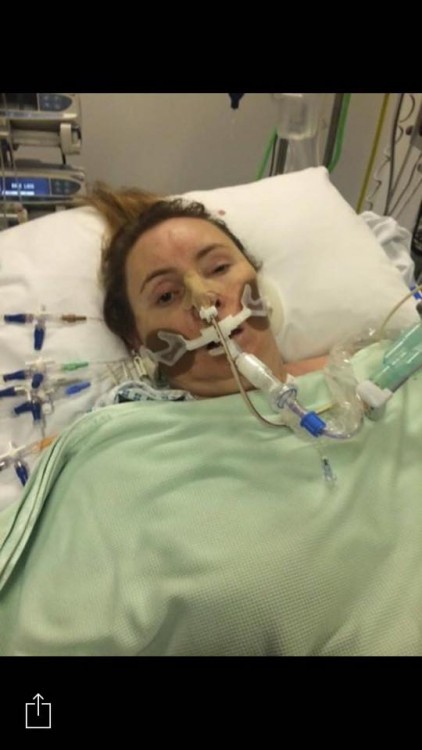
15. “My three handsome guys, my little EDSer is in the blue, can’t you tell.”
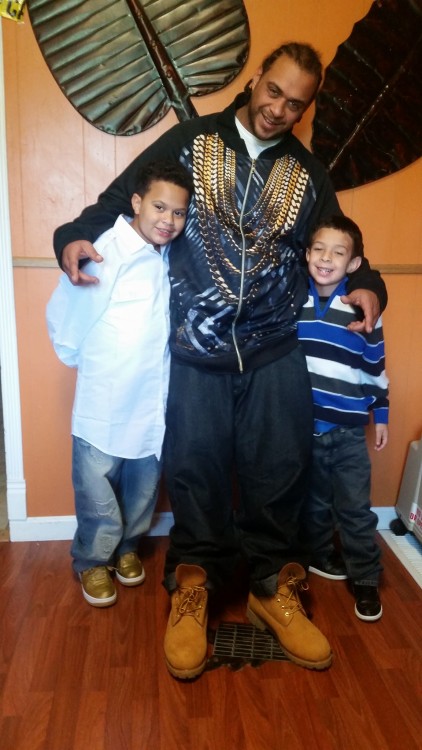
16. “Bending all the wrong ways. (This is an old photo, please don’t do ‘tricks’ like this just for fun.)”
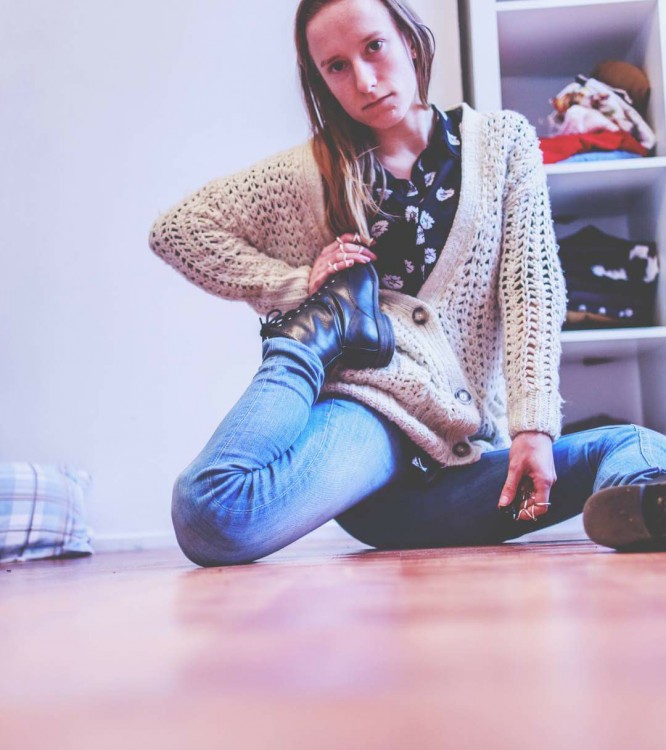
17. “Classical EDS… sorry for the picture, but it is my reality.”
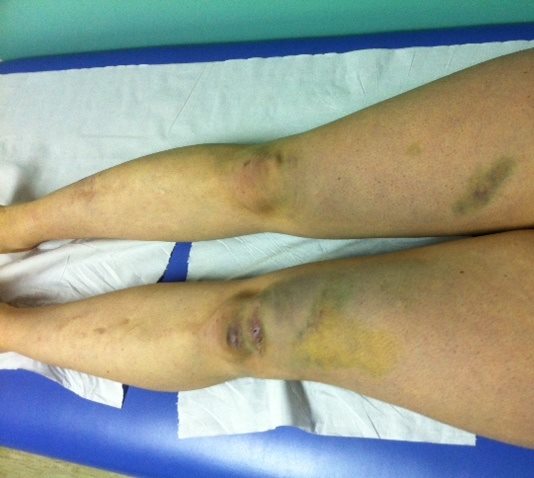
18. “Spoonies feel they have to hide for fear of judgment from the able-bodied community. I have regular IV fluids for POTS caused by my EDS, regular scans on my heart to check it is still working fine, regular nebulisers because my immune system can’t handle something as simple as the common cold. I have to strap most of my joints in a feeble attempt to keep them in place. And I do all of this without most people noticing/I’ve got so good at faking it that people don’t notice I’m sick! All they see is this.”
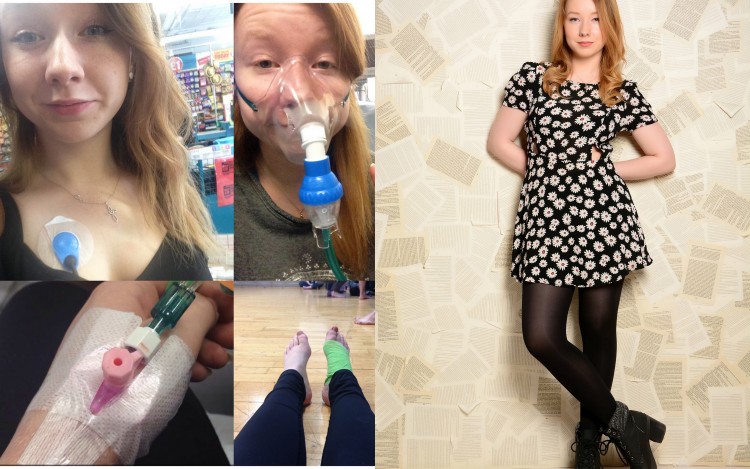
19. “It’s not an optical illusion; this is my connective tissue failing to hold me together properly. Sometimes I try to imagine what it would be like to be able to to trust my body. How wonderful it would feel to simple stick my hand out of the car window and let my fingers ride the wind…”
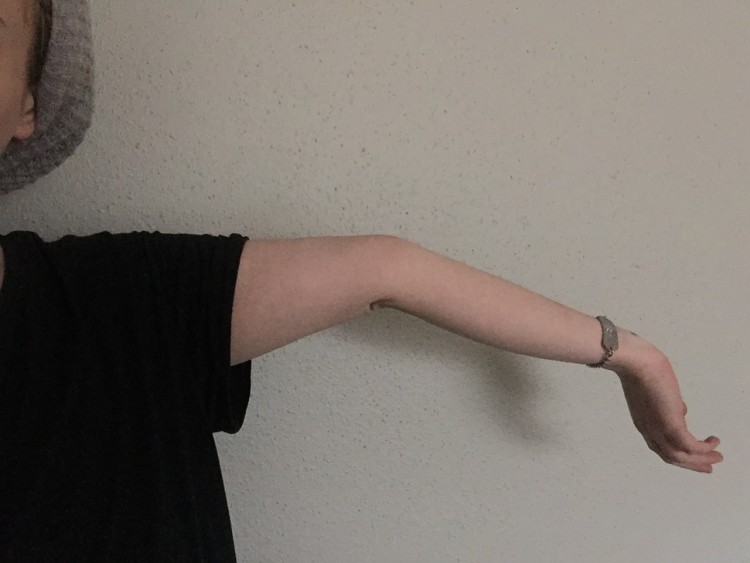
20. “HEDS isn’t just bendy joints and stretchy skin. I have multiple failing organs from it and am fed through my veins!”
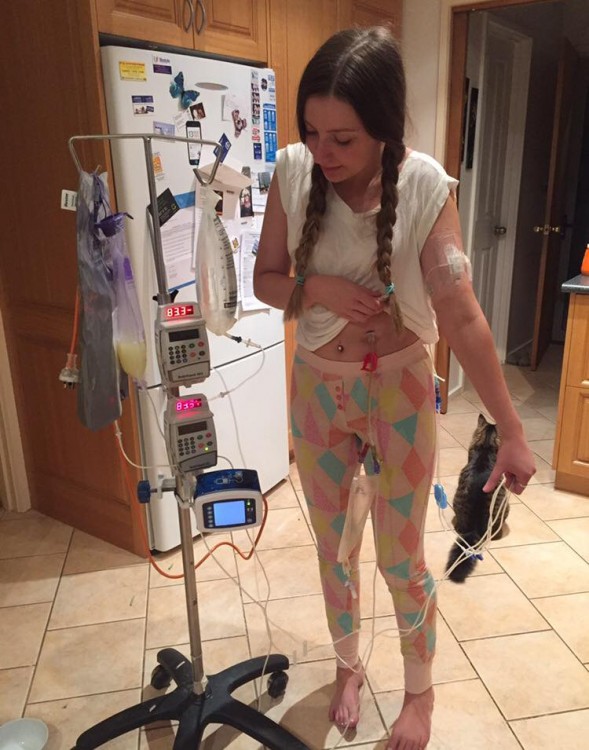
21. “So many tests. Wires all over the place all the time. This time a 96-hour EEG to try to get answers for a very scary ER trip two months ago. Yet I’ll still get dressed to hide it so no questions just like with any other thing. Just like most I’ve done this with a holter monitor, braces, and kt tape to conceal what’s really going on to appear ‘normal.’”
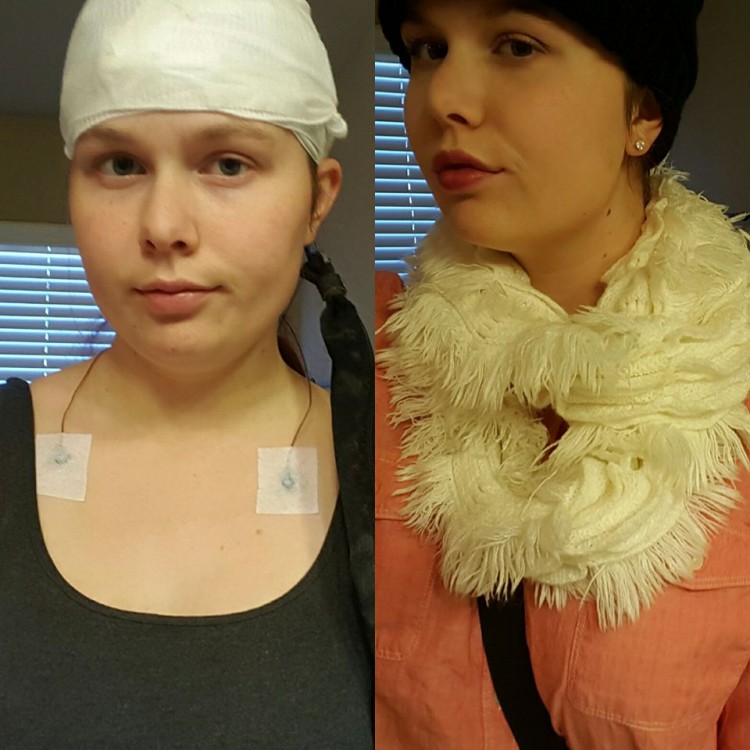
22. “Three generations of EDS together. My Nan is 96! We all look OK, but we all have our problems. They just aren’t always obvious.”
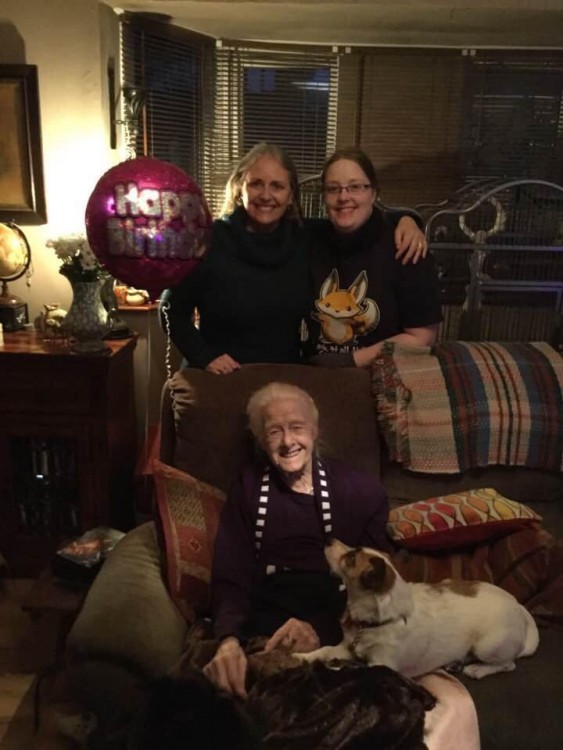
23. “Old pic but they still do the same thing… dislocated and twisted round… no pain from this, but my hands do feel tight and they are by far the least of my problems with EDS.”
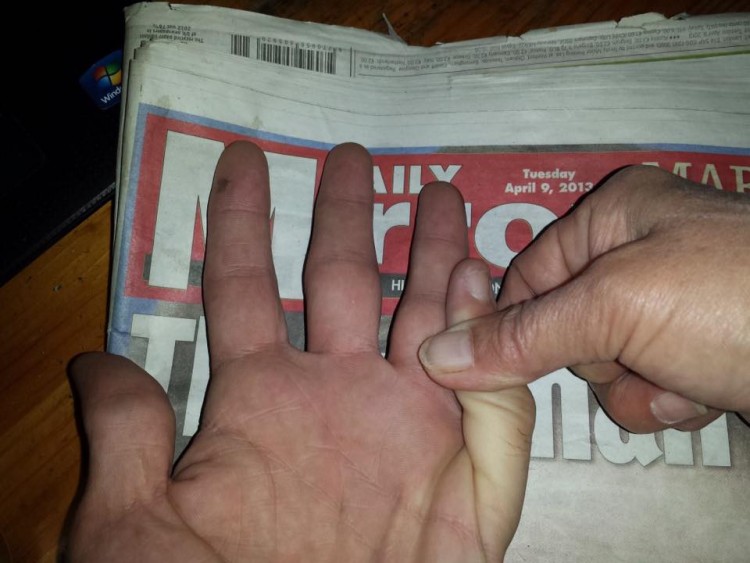
24. “My 19-year-old son Caleb carrying a full cup of coffee. This is natural/comfortable to him. If the outside can do this can you imagine what the inside looks like?”
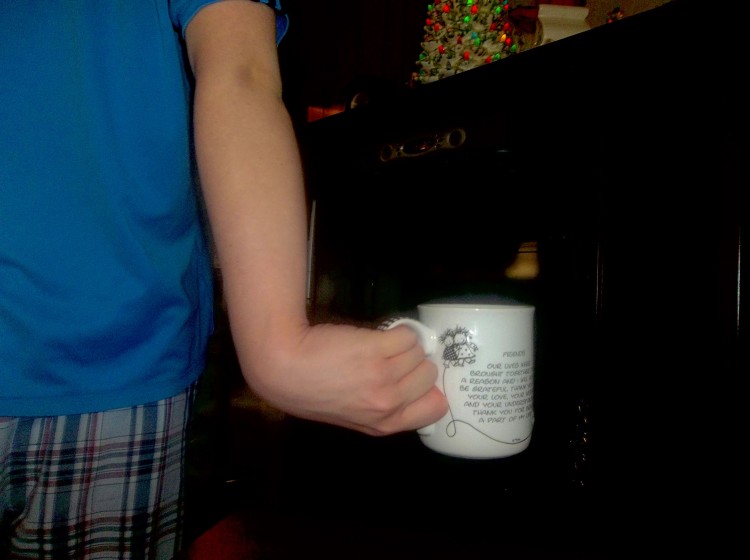
25. “Both taken on the same day.”
